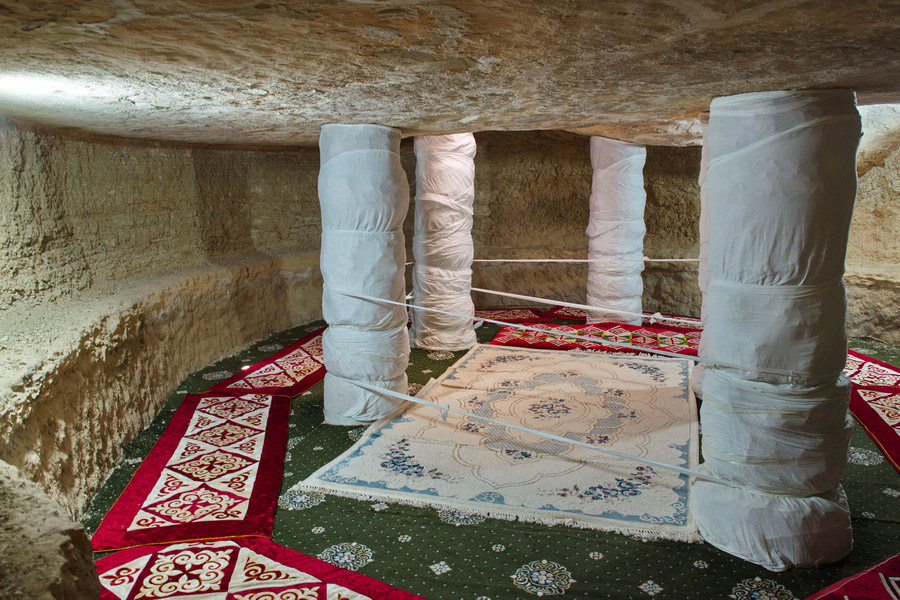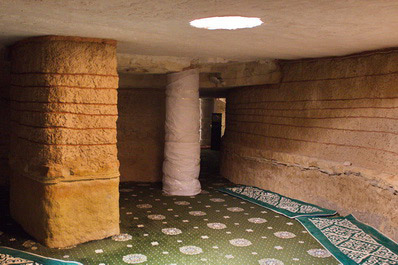Necropolis and Underground Mosque Karaman-ata, Mangystau

Hidden in the vast Kazakh steppe is the ancient necropolis and underground mosque of Karaman-ata. The first burials here date back to the 8th century, with the most recent occurring in 1970. The underground mosque was built in the 12th-13th centuries and, according to legend, Kazakh Sufi Karaman-ata is buried there.
The necropolis spans 7 hectares and includes hundreds of graves. It is the resting place of Kazakhs, Turkmens, Oguzes, and Kipchaks. By the 19th century, the largest cluster of mausoleums had appeared, belonging to the large Kazakh tribe Adai. Many of these mausoleums are adorned with modest ornaments and paintings.
The underground mosque, which descends to a depth of 5 meters, was created from a natural void in the layered rock. This natural cave was expanded to create two halls with a winding corridor and several light windows. It remains cool even during the height of summer. The far room is circular and was used for Sufi rituals. The floors are covered with soft carpets, so visitors should remove their shoes before descending into the mosque.
In the early 21st century, a guest house with a kitchen and prayer hall was built on the necropolis grounds. Pilgrims can rest here after a long journey and prepare a meal.
Karaman-ata is a semi-legendary figure about whom little is known. It is said that he was friends with Khoja Ahmed Yasawi and that he could transform into a bird to travel long distances in a day. He is also credited with building the underground mosque for solitary prayer.
The necropolis holds special sacred significance—it is forbidden to shed blood on its grounds. Enemies would come here to make peace and swear oaths, believing that breaking this rule would result in death the next day.
Today, the Karaman-ata complex is a monument of national importance in Kazakhstan. It is located only 65 km from Aktau, but due to the winding road, the journey is 145 km, with the last 15 km on a rough dirt road. Not far from the necropolis, 15 km to the west, is the small picturesque Ybykty canyon.


